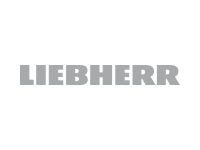ONE CLICK. ONE HIT.
PRODUCT INFORMATION MANAGEMENT WITH LOBSTER_PIM.
The PIM software Lobster_pim ensures that product information is available company-wide on a single central integration platform. This allows sales and webshops, marketing and support, as well as external partners, to access consistently updated and identical product data regardless of location. Media-neutral. Without disruption. User-friendly.

ADVANTAGES OF LOBSTER_PIM
Establishing a central product database improves purchasing, manufacturing, and sales processes and opens up important revenue sources and savings potentials for companies. Lobster_pim connects data and processes and creates a value-added cycle of product management information. Through the automation of recurring routine tasks, cross-system digitalisation of process chains, optimal connectivity, integrated data management, and automated information flows.
CUSTOMERS WHO RELY ON LOBSTER.







MANY FEATURES. FOR MORE UTILITY.
FUNCTIONAL DEPTH & USABILITY
- Datenintegration mit Lobster_data
- Zentrale Produktdatenverwaltung
- Umfangreiche Suchfunktionen
- Ausgabe auf allen Kanälen
- Import von Basisdaten aus WWS
- Kontinuierlicher Abgleich mit WWS
VERSION CONTROL
- Immediate communication of any changes
- Consistent, high quality data
- Product information customizable to the target medium and customer group
- Optimal document management
SCALABILITY & PERFORMANCE
- Rapid provision of information on new products
- Classification management
- Dynamic structure of information
- Reduce error rates, time and costs
- Database-driven production of print catalogues
- Integration of surrounding IT systems
- Location independent access to all data through web-based system architecture

- Central feature for seamless PIM
- Central product data management
- Structuring product information
- Data import & export
- Classification
- Comprehensive search features
- Media object management
- Media browser
- MAM interface
- Document management
- Translation management
- Workflow management
- Calendar system
• Easy handling of all product data through just one central database
• Individually definable version control, data and user history
• Detailed rights management, right down to attribute level
• Integration and replication of customer-specific workflows
• Powerful translation tool which is able to differentiate between cultures and markets
• Intuitive operability based on familiar patterns
• Management and direct integration of assets and documents
• User-oriented GUI with individually customisable data and views
• Individual implementation of product code variant structures
• Extensive import and export options as XML, CSV, Excel, MDB, ASCII, and more
• Export of data, lists, and tables at the touch of a button as Excel tables or PDF files
• Designer support for product and catalogue managers through the depiction of virtual pages
• Integration of free-form texts and images for simplified planning of catalogues
• Connection to shops, e-catalogues, and content management systems
• Automated support for publishing tools – based on rules and templates
• Automatic installation of regular updates through integrated client management
• SaaS solution as well as full in-house implementation
The centrepiece of the Lobster PIM software is a media-neutral product data management system. The central data source is in constant synchronisation with the data repositories of other PIM-relevant systems such as the ERP system, and therefore guarantees a consistent range of information throughout the company. On the other hand, Lobster_pim prepares product information for data use in a variety of target systems, such as e-commerce, websites, CD-ROMs, or print catalogues.
• Visually guided data modelling expandable with regard to trees, attributes, grouping, and hierarchy.
• Functional depth for more complex data constellations, as frequently encountered in industrial and technical B2B environments.
All customer-specific data imports and exports can be integrated easily into the standard user interface using a configuration file and accessed from there.
Imports:
• Can generate new structures, create attribute values or simply update existing data
• Incremental imports are also possible
• Import data from CSV, TAB text, Excel files or tables from SQL databases
• Fast mass import of entire directories with texts and images
• Direct assignment of objects and products through analysis of the file name
Export:
• Direct Excel/CSV export without configuration using visual filters
• Configured Excel/CSV export for more complex exports, easily accessible via a menu
• SQL export: Exports data from Lobster_pim to any SQL database or as a “generic export” for a standardised output structure to downstream systems
• BMEcat export. Products and structures can be exported as a BMEcat file
• PDF export. Images, set attribute values (with attribute names) and texts associated with each selected product can be exported as PDF files. The first page of the PDF file is a table of contents and the design of the PDF file is customisable. The result is an easy-to-make PDF product datasheet.
• Export texts. This feature exports all texts that are subordinate to the selected node in the product tree. Can be formatted as HTML with CSS
• Export images. This feature exports previews created by Lobster_pim when importing images
• Template-based export. Provides an export interface for any text-based output format (e.g. HTML, LATEX) as well as PDFs, via the integration of FOP
• Export group names. This feature allows all group names in the current product tree to be exported as Excel spreadsheets for translation.
Lobster_pim operates with various classification systems. These include eCl@ss, ETIM and Proficl@ss as standard. The integration of additional systems is possible on request.
Carry out complex search queries using the search feature. Users can search for variants without an original, for example, use placeholders and regular expressions, or even collate any desired number of search criteria for the attribute values. A wide variety of system attributes can be searched for (status, attribute group, number of subordinate elements, and much more). Searches can be saved and made available to all users. A quick search can be performed to immediately access any object in the product data by name, article number or history.
Lobster_pim uses a comprehensive system for storing, enriching, assigning and searching media objects (for example, images or documents). These can be stored in separate structures or assigned to a product. In principle, the image data can either be stored in the customer’s file system or in one of several media asset management systems. The handling stays the same. Lobster_pim supports all common image data formats. The light table feature clearly arranges all media objects within a product group next to one another. Lobster_pim has a rule-based automatic mapping of media objects and products, and also includes a media browser in the client accessible via drag-and-drop.
The Lobster_pim media browser (Asset Browser) allows the solution to connect to various MAM systems, view the media contained therein, and transfer it to the PIM. Alternatively, media stored in the file system can be treated like a MAM system.
Lobster_pim’s Media Asset Management (MAM) interface supports the following systems:
• Celum
• Canto
• SixOMC
• Picturepark
• Pixelboxx
• File system (server-side folder structure)
When opting for a MAM system, it’s possible to select optional extras, such as image cropping, automatic colour-space conversion and XMP data processing.
Using a MAM enables the following features with certain limitations:
• Document management
• Preferred assignment of documents
• Editing of documents
• Version management
• Variant management
• Search feature
Lobster_pim fundamentally allows for all information to be maintained in multiple languages and for the creation of language-independent objects.
All Lobster_pim components are web-based and can be operated from any given operating system, and any given browser. With the help of a detailed user administration system, integrated multilingual capabilities and a configurable workflow, translations can be maintained worldwide within the system, while translation jobs can be automatically assigned and submitted for review.
In addition, translation is possible in the user’s own text editor. For comparative reading, two language versions of a text are displayed below each other in the text editor view – the source language is read-only, but all changes made in the last version are displayed. The target text can be edited directly.
PIM workflows such as product data maintenance, translation management, media management, or catalogue management can be depicted in Lobster_pim. The software supports both attribute-based and object-based workflows, such as translating texts or managing approvals for product data before information is posted.
The workflow management in Lobster_pim can optionally be further automated by the “scheduled jobs” module. Many PIM processes such as data imports, exports, searches and manipulations can therefore be carried out once and/or recurrently at a set time.
The Lobster_pim system also includes a user management feature, where user rights such as read, write, or delete can be set up to the level of individual product properties. Additionally, the management feature allows for configuring the user’s view of the application – the user’s workspace can be limited to specific areas, which both speeds up access to important information and significantly improves clarity. Grouping users into user groups makes it easier to assign the same rights to a specific group of people. Lobster_pim allows user information to be read and synchronised via LDAP.
Lobster_pim enables the user to define scheduled tasks via an internal calendar. The task management also supports product data maintenance, translation management and media object and catalogue management.
COMPONENTS.
GRAPHIC PRODUCTION PREPLANNING
Lobster_pim allows the structure of an advertising medium and the arrangement of the products on the individual pages to be preplanned directly via a configurable page grid.
The allocation of products in the page grid is done graphically by drag & drop directly in PIM via a whiteboard.
This allows publications to be visually planned, managed and corrected directly in PIM. The output is then a PDF or is transferred to an InDesign file for further processing.
The connection is not lost in the process, allowing for optimal interaction between PIM, whiteboard, and InDesign publishing.
Priint:Comet interface (SOAP)
The PRIINT:COMET interface allows InDesign documents to be created automatically and directly from the PIM system.
The automation is based on templates defined graphically in InDesign, which can be assigned and filled with product hierarchies from the PIM system, displayed directly in InDesign.
The interface works in both directions, i.e. changes from PIM can be transferred directly to the InDesign document and changes in the InDesign document that do not correspond to the PIM data are marked accordingly.
This allows for an efficient, error-avoiding change management to be easily integrated into a DTP publication process.









